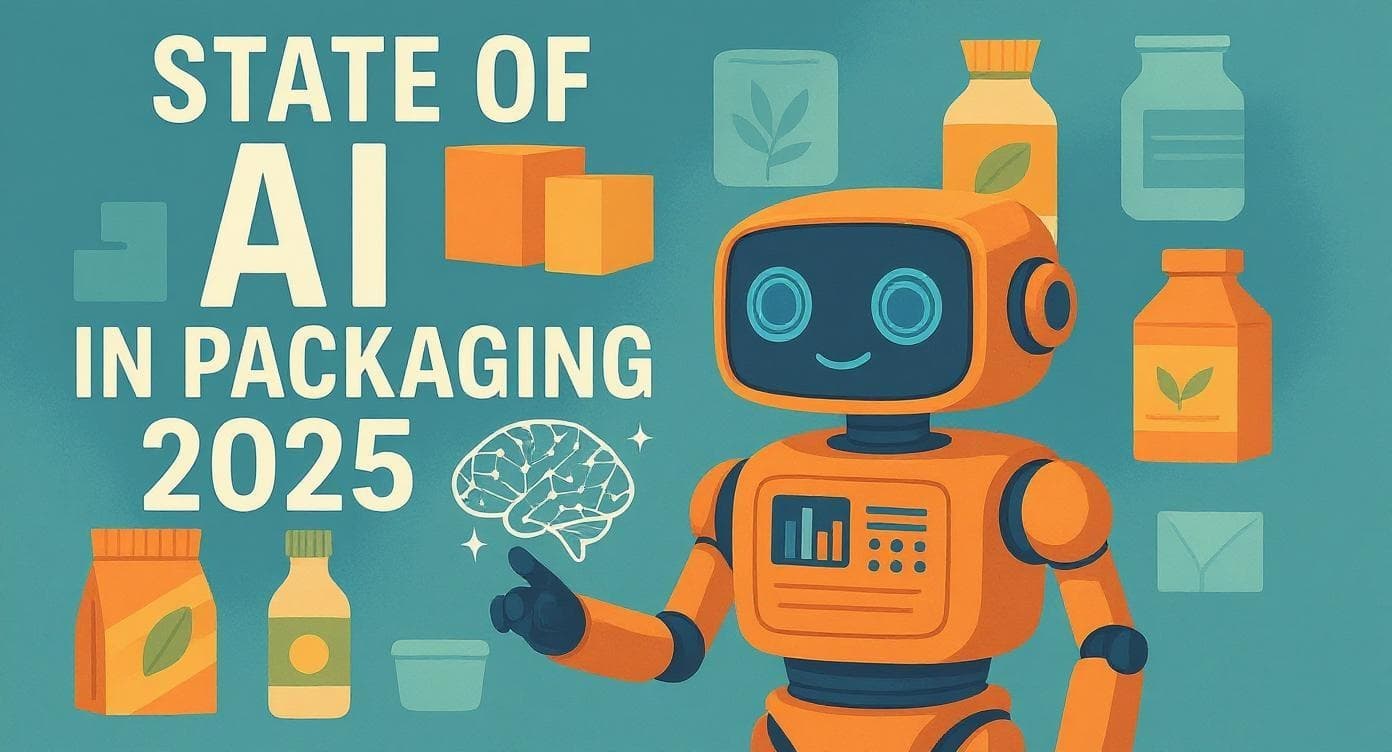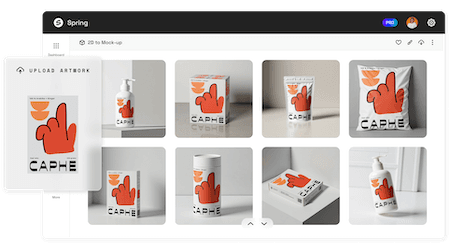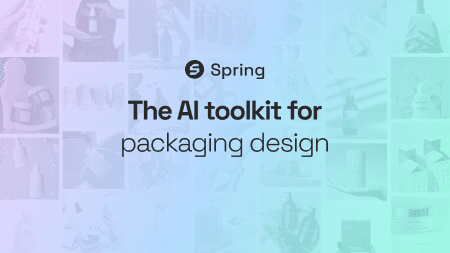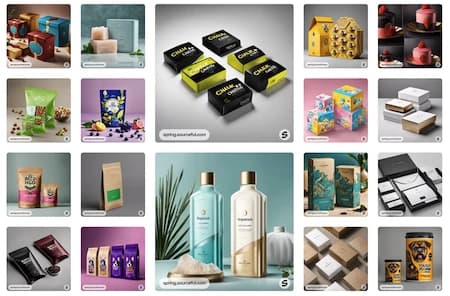Blog PostPackaging tape: how to find the most sustainable for your brand
- Materials
- Sustainability
Rachel LawtonJune 22, 2023 -

Choosing a packaging tape may seem like a fairly straightforward task. Until you realise how many types there are, each with different strengths (literally). Combine that with sustainability concerns and a heap of customisation options and you’ll soon see it’s not as simple as you thought.
But making a choice doesn’t have to be too challenging. To help, we’ve compared two of the most sustainable custom tapes against a few more traditional tapes. Once you know their key features, you can see which ones align with your business and sustainability goals and choose the right one for you.
Most sustainable packaging tapes in 2023
More sustainable tapes
- Gummed Tape
- Self-Adhesive Paper Tape
Other tapes
- Brown Polypropylene
- Clear Polypropylene
- Coloured Polypropylene
- Vinyl Packaging
- Reinforced Glass Filament
More sustainable tapes
1. Gummed Tape
Gummed tape is the ultimate paper packaging companion. And yes, we’re a little biased — but with good reason.
Gummed tape is a kraft paper tape with a starch-based adhesive that’s activated by water. When applied to paper packaging, like a cardboard box, it doesn’t just stick like regular tape — it fuses to your packaging. This creates a strong bond and a tamper-evident seal as you can’t remove the tape without ripping the package.
Under the right conditions, it can secure packages up to 15kg in weight. And the packaging — gummed tape included — can be recycled at the kerbside once used. That’s a major advantage over plastic tape, which nearly always can’t be recycled. In fact, we’ve done the maths and found that using gummed tape instead of plastic tape can reduce your carbon footprint by up to 50%.
And the pros don’t stop there. Gummed tape offers a fantastic branding opportunity. You can easily print your logo, slogan and other artwork directly onto the tape, helping your packaging stand out and generating brand awareness.
In short, if you’re using paper-based packaging like mailer boxes or shipping boxes, gummed tape provides strength, style and improved sustainability over plastic tape.
Pros
- Durable
- Plastic free
- Customisable
- Kerbside recyclable
- Available as FSC certified
- Long shelf life
Cons
- Needs a tape dispenser
- Slow to apply due to bonding process
- Only suitable for paper and card packaging
2. Self-adhesive paper tape
Self-adhesive tape is another paper-based tape with similar benefits to gummed tape.
For starters, it’s strong, securing packages up to 10kg. It’s also customisable, so you can add your logo, instructions for handlers or delightful messages for customers. And as the name suggests, “self-adhesive” means it doesn't need any specialised dispensers, making it quick and easy to use.
One key difference between this and gummed tape is that self-adhesive tape uses a solvent to stick to your packaging. The disadvantage here is that it makes it slightly less sustainable than gummed tape’s water-activated bonding adhesive. But an advantage is that it can stick to a wider range of surfaces.
Using self-adhesive tape can still reduce your carbon footprint by up to 20% compared to plastic tape. But it’s important to note that the adhesive means the tape fibres themselves aren’t easily recyclable. Though as long as there’s not a huge amount of tape used, it won’t create any recycling problems for the paper packaging it’s attached to.
Pros
- Durable
- Customisable
- Kerbside recyclable
- No dispenser needed
- Available as FSC certified
- Suitable for a range of packaging materials
Cons
- Affected by humidity
- Not as durable as plastic tapes
- Shorter shelf life than gummed tape (~6 months)
Other tapes
3. Brown polypropylene tape
This is your standard, widely recognised brown parcel tape. It’s cheap and does a good enough job sealing packages. It blends with brown boxes, which might be your desired look, but it can look untidy against different coloured boxes.
Of course, it’s made from plastic, so it’s non-recyclable and has a higher carbon footprint than paper-based tapes.
Pros
- Durable
- Moisture resistant
Cons
- Plastic
- Unbranded
- Not recyclable
- High carbon footprint
4. Clear polypropylene tape
This tape is like brown packaging tape, except it’s transparent. This can be good if you don’t want your tape to conceal your packaging’s designs or instructions.
It’s available in a wide range of widths and thicknesses, which is helpful when you want to reduce the materials you're using. But, once again, it’s a non-recyclable, plastic tape with a higher carbon footprint than paper tapes.
Pros
- Durable
- Transparent
- Suitable for a range of packaging materials
Cons
- Plastic
- Unbranded
- Not recyclable
- High carbon footprint
- Hard to remove cleanly
- Noticeable on darker packaging
5. Coloured polypropylene tape
The difference between this and the other propylene tapes is that it comes in a range of colours. This can be useful when organising packaging during handling and shipping or for drawing attention to it.
Pros
- Durable
- Transparent
- Allows for colour coding
- Suitable for a range of packaging materials
Cons
- Plastic
- Not recyclable
- High carbon footprint
- Limited colour options
6. Vinyl packaging tape
Vinyl tape is a heavy-duty tape that’s stronger than standard polypropylene (PP) tape. It’s less likely to tear or burst than PP tape and the adhesive can withstand colder temperatures, so it’s potentially a good choice for refrigerated goods.
Pros
- Highly durable
- Moisture resistant
- Variety of colours available
- Can be printed on to include instructions
Cons
- Plastic
- Not recyclable
- High carbon footprint
7. Reinforced glass filament tape
Reinforced glass filament tape is a strong, plastic tape suited to particularly heavy goods. The glass filaments can be added to run in one direction or be cross woven. Both of these create extra resistance and added security.
Pros
- Strong
- Moisture resistant
- Suitable for a range of packaging materials
Cons
- Plastic
- Not recyclable
- Leaves residue
- Often hard to cut or tear
How to find the best packaging tape for your business
So now you know the key features of the most popular tapes. And you might already have an idea about what you want and what you don’t want in the one you choose. But before deciding, make sure you’ve thought about the following four key considerations.
- Ease of use
- Branding
- Environmental impact
- Strength and durability
1. Ease of use
In any business, you want things to run as smoothly as possible. So, when choosing between packaging tapes, think about ease of application and convenience.
Some tapes, like gummed tape, may need a dispenser to activate the adhesive, whilst self-adhesive paper tape can be easily applied without any extra tools. There’s also the issue of noise. Packaging centres can be noisy places, and some tapes, like polypropylene, can add to that quite a bit. Although you can find “low-noise” variations, this can affect your team and slow down the packaging process.
It’s also worth weighing convenience up with sustainability. For example, gummed tape might take that a little bit longer to apply, but with a significantly smaller carbon footprint than plastic tapes, you might decide those few extra seconds are worth it.
2. Branding
Many businesses use a run-of-the-mill tape that simply does what it’s made for. But why not choose one that helps you stand out by going above and beyond its original function?
Using your packaging tape as a marketing opportunity is a great way to drive brand awareness. Custom tapes can get your logo out there and showcase your brand personality. And they’re also an opportunity to delight customers, showing them you pay attention to the little details that add to their unboxing experience.
Because they’re made from paper, gummed tape and self-adhesive tape are perfect for printing on. So consider these as a way to take your packaging from functional to fabulous.
3. Environmental impact
Sustainability may be one of your top priorities. Or it could be something you haven’t really thought about until now. But with the world of commerce shifting towards increased producer responsibilities, it’s best to stay ahead of the curve and reduce your packaging’s environmental impact. Tape included.
Switching from traditional plastic tape to paper-based tape, like gummed or self-adhesive, can significantly reduce your carbon footprint. This matters because customers are increasingly looking to buy from brands with strong sustainability agendas.
So choosing a tape that helps to reduce your environmental impact — instead of increasing it — is not just better for the environment but also for your business.
4. Strength and durability
It goes without saying that if your product doesn’t arrive intact, your customer won’t be happy. This can lead to financial losses in returns, as well as reduced customer loyalty as they switch to more reliable brands.
So, make sure your tape holds up against the weight of your package, weather conditions and any rough handling it might go through during transit.
And don’t forget that heavy-handed treatment isn’t the only risk to your package. Package theft is on the rise. And who’s to say that an opportunist won’t open your package, take what’s inside and seal it back up for your unsuspecting customer to receive?
That’s where stronger tapes come in. These will rip the packaging when removed, making any tampering obvious. Tapes such as gummed tape, with its unique bonding properties, are great deterrents for anyone thinking of practising their sleight-of-hand.
Make your packaging more sustainable with Sourceful’s packaging tapes
As you’ve seen, there’s quite a range to choose from when it comes to packaging tapes. But making the right choice doesn’t have to be hard.
For example, a basic brown packaging tape isn’t ideal if you’re looking for strength. And if sustainability is at the top of your priorities list, you’ll rule out all the plastic tapes mentioned, leaving just two to choose between: self-adhesive tape and gummed paper tape.
If you’re looking for a tape that you can brand and which sticks to a variety of packaging materials, self-adhesive tape is the one for you. Or if you want one that bonds to your paper packaging to create a stylish, secure and more sustainable seal, gummed tape is your best bet.
And if you’re still unsure, reach out to one of our experts. Get in touch








